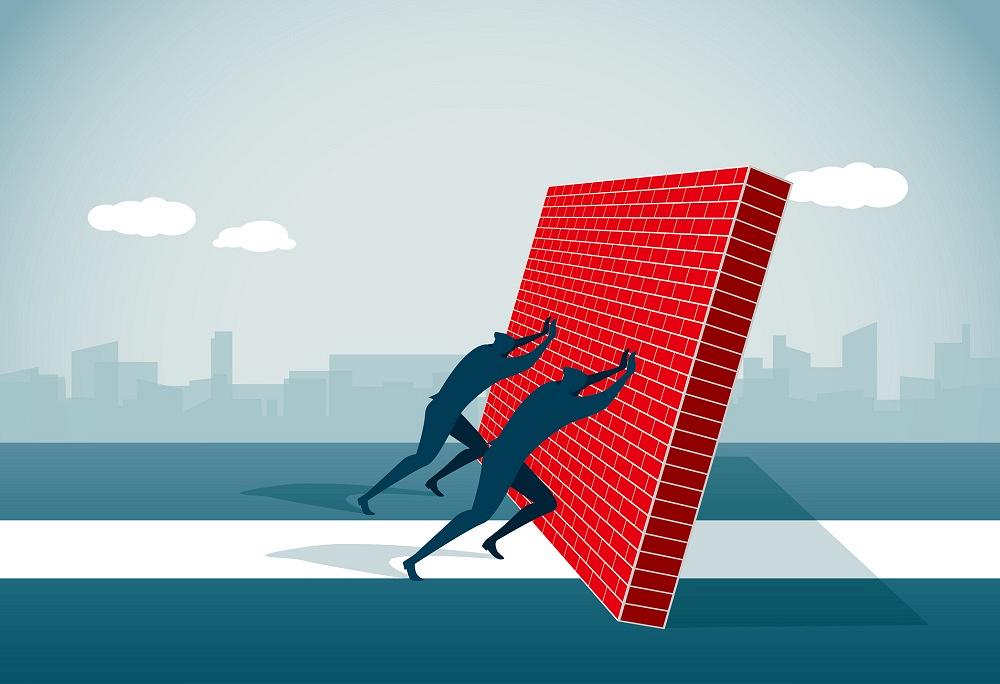Contributing editor
- FMA
- The Fabricator
- FABTECH
- Canadian Metalworking
Categories
- Additive Manufacturing
- Aluminum Welding
- Arc Welding
- Assembly and Joining
- Automation and Robotics
- Bending and Forming
- Consumables
- Cutting and Weld Prep
- Electric Vehicles
- En Español
- Finishing
- Hydroforming
- Laser Cutting
- Laser Welding
- Machining
- Manufacturing Software
- Materials Handling
- Metals/Materials
- Oxyfuel Cutting
- Plasma Cutting
- Power Tools
- Punching and Other Holemaking
- Roll Forming
- Safety
- Sawing
- Shearing
- Shop Management
- Testing and Measuring
- Tube and Pipe Fabrication
- Tube and Pipe Production
- Waterjet Cutting
Industry Directory
Webcasts
Podcasts
FAB 40
Advertise
Subscribe
Account Login
Search
Seeing the manufacturing process from all sides and bringing down "The Wall"
- By Kate Bachman
- December 9, 2019

When manufacturing engineers and tool- and diemakers collaborate, looking at things from another’s side may be the most expedient path to tearing down the wall to resolve problems. Getty Images
Recently I listened to Joni Mitchell’s original acoustic version of “Both Sides Now,” a lyrical commentary on changing perspectives and literally looking at the flip sides of things.
It was playing in my head long after I’d heard it, the way certain songs can do. It emerged in my subconsciousness while I was editing an article written by veteran tool- and diemaker Ron Hayes. In the article, Hayes references what he calls “the wall” that often develops between the designer/engineer and the tool and diemaker in a stamping shop.
Hayes relayed that, in his experience, product and die designs are done without consulting with those who are charged with making them work. He pointed to examples of problems that occur when people on both sides of “the wall” don’t confer with each other.
He added that because stampings usually are part of an assembly that must undergo additional processes, personnel from those areas should be consulted, too, because problems occur if they aren’t.
Hayes offered advice to both engineers and tool- and diemakers from the perspective of a very experienced person who has been on the receiving end of some good and bad tool and die design. Everyone has something to offer from their area of expertise, and everyone has something to learn, he says. Work together by keeping the end result in mind.
Keeping the Final Result in Mind
It seems that productivity-inhibiting walls are erected in many plants. They can be generational walls, interdepartmental barriers, management/nonmanagement obstructions, and internal/external walls such as between production operations and customers.
Older, experienced staff can scoff at the mistakes a young person makes and miss out on the infusion of enthusiasm the ingenue can bring and the opportunity to be a teacher. A young person can be disrespectful to an older employee and miss the chance to grow under the tutelage of a seasoned professional.
A tool and die designer may not realize that a 0.001-inch line on a computer screen does not translate to a 0.001-in. bend in sheet metal. A tool- and diemaker might not realize that a good stamping may not be weldable. A good weld may not be receptive to powder coating. And so on.
Production staff may be frustrated with what might seem to be a frivolous product requirement – and the resulting high part reject rate – without having to experience how a salesperson interacts with customers. A salesperson may have no idea how difficult a certain tolerance will be to achieve on the plant floor, though it may please the customer.
No more literal example exists of the counterproductivity that happens when there is a wall between production staff and upper management than the recent union worker strikes at automaker plants. When that wall goes up, the line stops.
Bringing Down The Wall
Exactly a month ago, nations celebrated the 30th anniversary of the day the Berlin Wall began to come down. In today’s current political arena of heated arguments and one-sided viewpoints, we may all have been influenced to be entrenched in one perspective. But trying to look at things from another’s side may be the most expedient path to tearing down the wall to resolve problems.
I’ll go so far as to say that extending a little empathy and picturing yourself in another’s position will go a long way toward achieving common goals and best results. After all, if you’re earning from the same source, you really are on the same side.
subscribe now

The Fabricator is North America's leading magazine for the metal forming and fabricating industry. The magazine delivers the news, technical articles, and case histories that enable fabricators to do their jobs more efficiently. The Fabricator has served the industry since 1970.
start your free subscriptionAbout the Author

Kate Bachman
815-381-1302
Kate Bachman is a contributing editor for The FABRICATOR editor. Bachman has more than 20 years of experience as a writer and editor in the manufacturing and other industries.
- Stay connected from anywhere

Easily access valuable industry resources now with full access to the digital edition of The Fabricator.

Easily access valuable industry resources now with full access to the digital edition of The Welder.

Easily access valuable industry resources now with full access to the digital edition of The Tube and Pipe Journal.
- Podcasting
- Podcast:
- The Fabricator Podcast
- Published:
- 04/30/2024
- Running Time:
- 53:00
Seth Feldman of Iowa-based Wertzbaugher Services joins The Fabricator Podcast to offer his take as a Gen Zer...
- Industry Events
Pipe and Tube Conference
- May 21 - 22, 2024
- Omaha, NE
World-Class Roll Forming Workshop
- June 5 - 6, 2024
- Louisville, KY
Advanced Laser Application Workshop
- June 25 - 27, 2024
- Novi, MI
Precision Press Brake Certificate Course
- July 31 - August 1, 2024
- Elgin,































